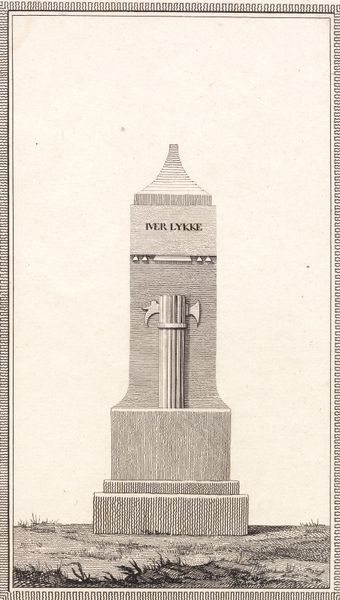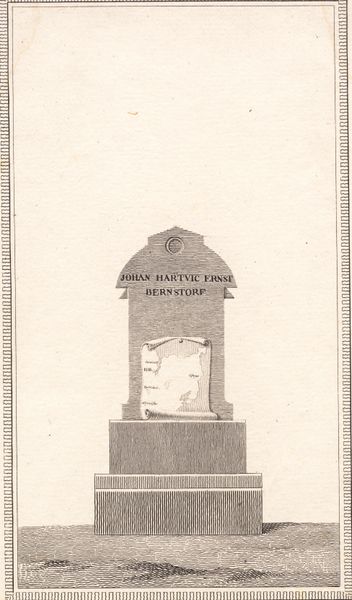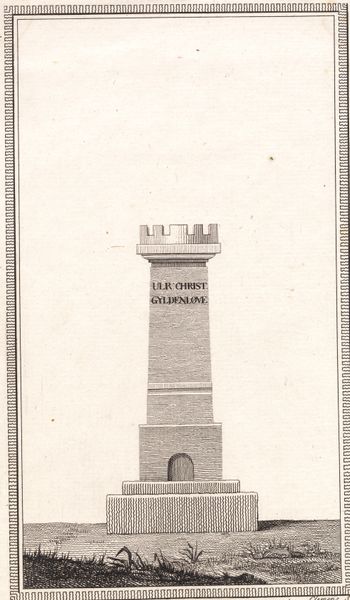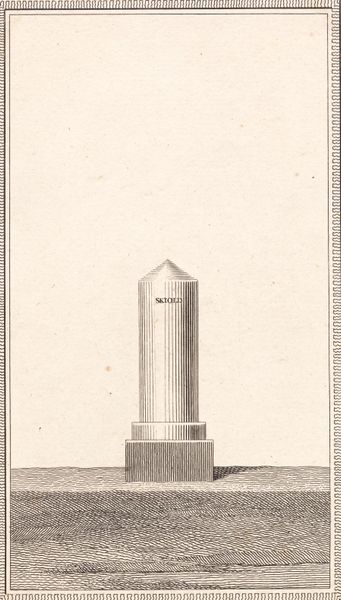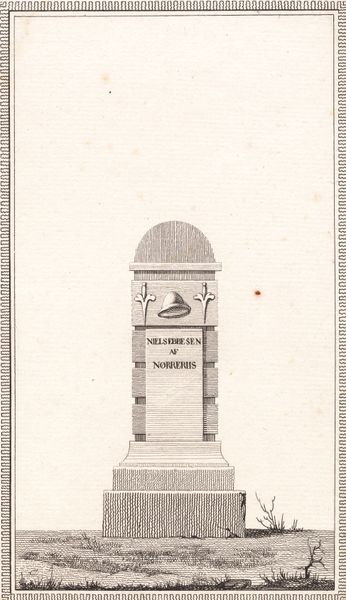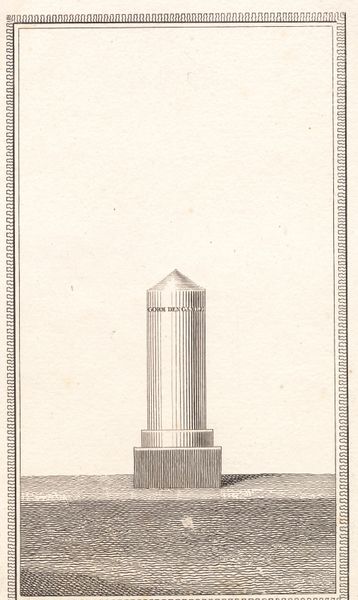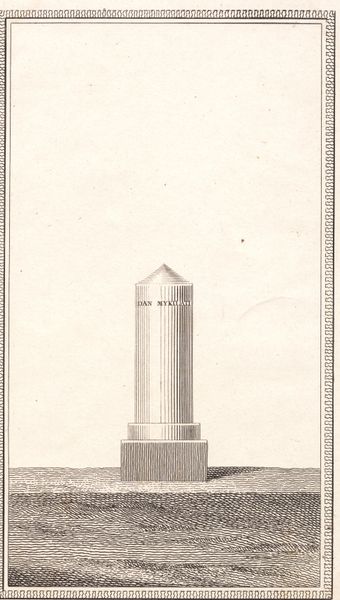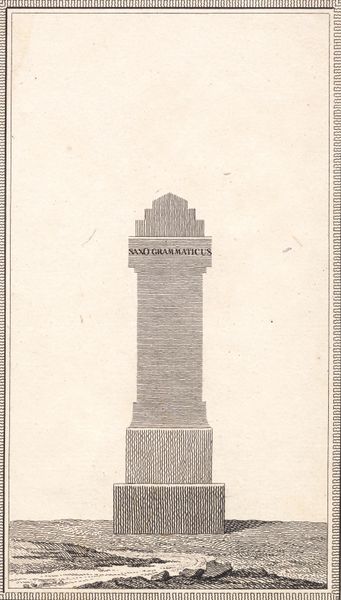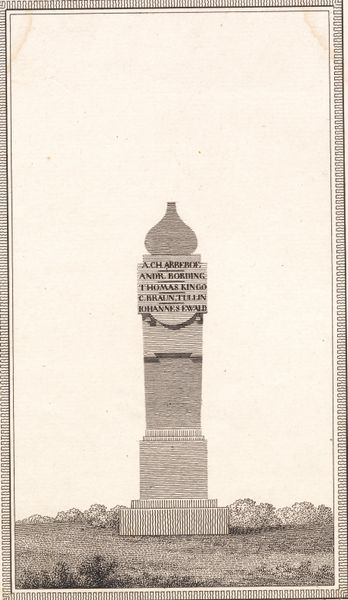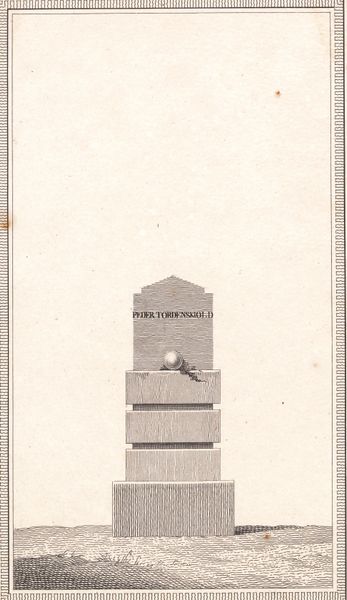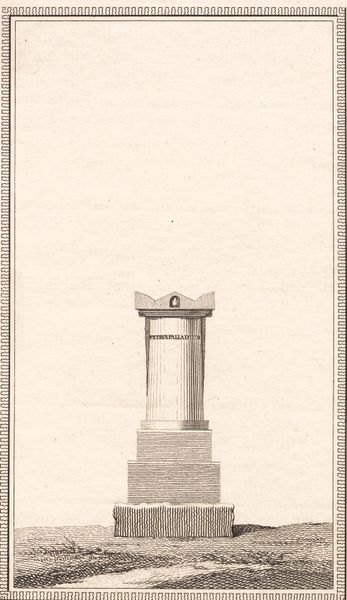
drawing, print, etching
#
portrait
#
drawing
#
neoclacissism
# print
#
etching
#
form
#
line
Dimensions: 178 mm (height) x 103 mm (width) (billedmaal)
Curator: My first thought is... understated. The simplicity of line and form here gives it a kind of stoic reserve. Editor: Indeed. We're looking at J.F. Clemens' "Tyge Krabbe," created between 1779 and 1781. It's an etching, housed here at the SMK. Notice how Clemens embraces Neoclassical ideals with a spare, linear style. Curator: Absolutely. That line work is meticulous, precise. There is something of classical statuary, albeit miniaturized and rendered through printmaking. Krabbe is presented, visually, as an ideal, a name on a pillar, stark, with just those sparse plants beneath to represent a human scale. It is almost archetypal. Editor: Considering it's an etching, made for reproduction, the choice to focus on stark, unadorned memorial seems appropriate. Prints were circulated and carried ideas about who Krabbe was and what he meant in the public consciousness. Who was Tyge Krabbe? This almost acts as propaganda by other means... Curator: I believe this restrained classicism projects nobility but perhaps the blank space above and around could signify loss, absence – the form exists, but the living presence is gone, now simply reduced to a marker, with an intriguing barred central section like a rolled blind or locked gateway. Editor: I think you're right. He probably died before this image was made; he died in 1785, and if this piece was begun in '79, he may well have been ill, or frail – somehow less tangible. We are looking at a memorial really – less an account of the person, and more of the socio-political ideas of this specific man, presented in an accessible, reproducible way to build or reinforce this figure of political importance. I'd even go as far as saying Clemens aimed to manufacture social memory itself. Curator: A potent example of how form shapes memory. That line, those sharp edges and controlled design choices work to build a lasting impression of permanence and respectability. This piece leaves us room to think about public versus private grieving, where personal emotion meets societal expectations of remembrance. Editor: It leaves me wondering about what visual cues people would recognize in this kind of image as conveying important social or political messaging and memory making. What do we need to see to recognize the signal it is transmitting?
Comments
No comments
Be the first to comment and join the conversation on the ultimate creative platform.
